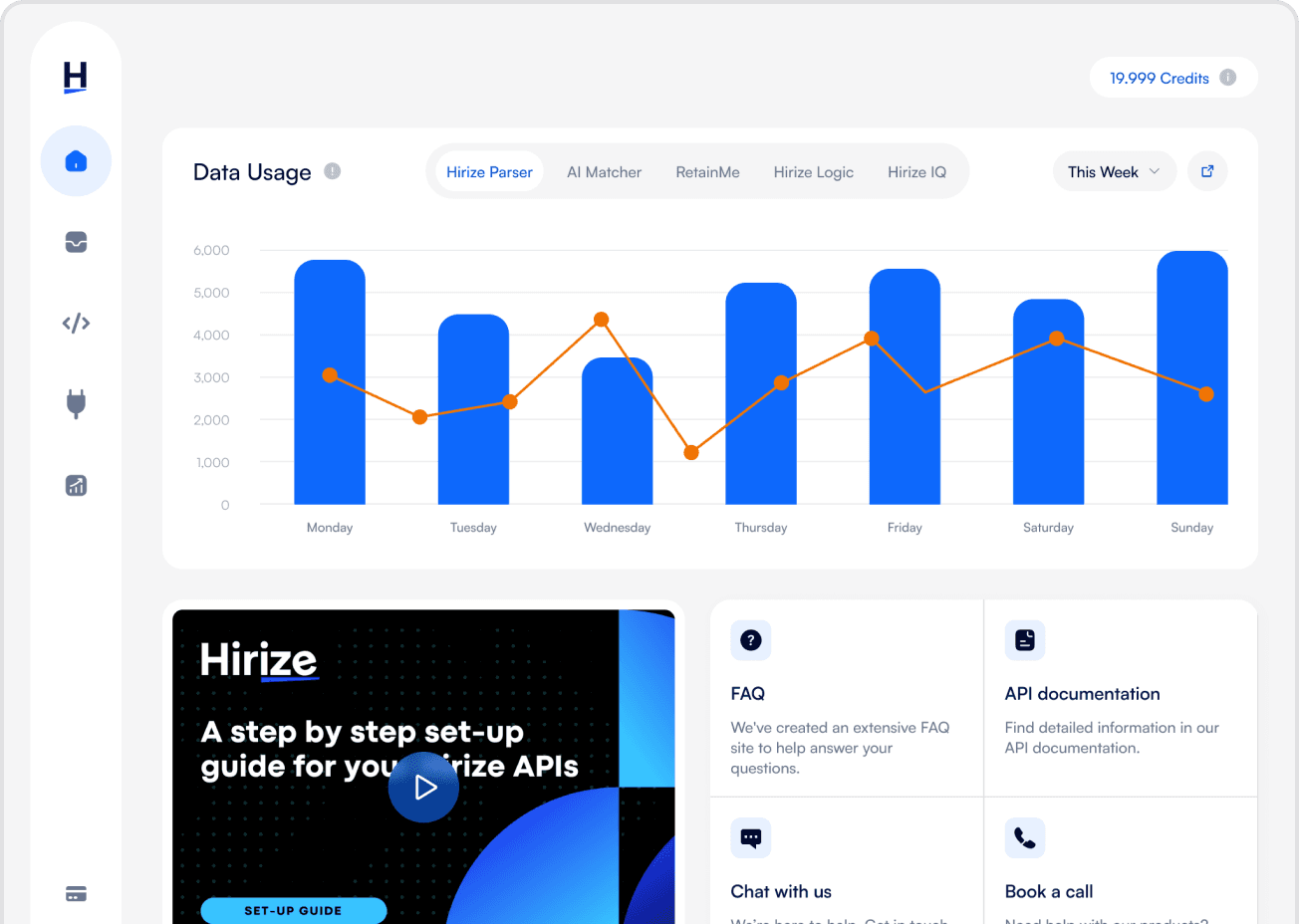superpowers?
How an ATS Reads a Resume? Where Does ATS Fail to Read a Resume Properly?
Find out how an ATS reads a resume and why some top candidates get overlooked.

Applicant Tracking Systems (ATS) have revolutionized the hiring process, making it more efficient but also introducing new challenges. Despite their advantages, ATS often fail to parse resumes correctly, leading to missed opportunities for top candidates and frustration for recruiters. Understanding how ATS works and where it commonly fails is crucial for optimizing the recruitment process and ensuring the best candidates are identified.
Common Pitfalls of ATS in Parsing Resumes
Issues with complex formatting
Elements like headers, footers, and graphics might enhance the visual appeal of a resume but can confuse ATS software. These systems are designed to extract text-based information, and complex formatting can disrupt this process, leading to misinterpretation or omission of critical data.
Challenges with non-standard file types
The file type used for resumes can significantly impact an ATS's ability to parse information. While Word documents (.doc or .docx) are generally the safest bet, PDFs can sometimes pose challenges for older ATS versions, leading to inaccurate data extraction.
Problems with keyword extraction and context
The strategic use of keywords is crucial for an ATS-friendly resume. However, merely scattering keywords without context can be ineffective. The ATS algorithms look for keywords within the context of achievements and experiences, and failing to integrate them properly can result in a lower ranking.
Inconsistent formatting and use of tables
ATS systems can struggle with inconsistent formatting and the use of tables. Resumes with varying fonts, sizes, or colors can confuse the parsing algorithms. Additionally, tables might be misread or ignored, leading to critical information being overlooked.
Incorrect or missing headers
ATS systems rely heavily on headers to categorize and extract information. If your resume lacks clear headers like "Work Experience," "Education," or "Skills," the ATS might miss essential sections of your resume. Similarly, unconventional or overly creative headers can confuse the system.
Ignoring industry-specific jargon
Failing to include industry-specific jargon or acronyms can also be a pitfall. ATS algorithms are often programmed to look for specific terminology relevant to the job. Missing out on these can reduce your resume’s chances of being flagged as relevant.
Effective Solutions to Improve ATS Resume Parsing
Selecting the right file type
Opt for a Word document (.doc or .docx) to ensure your resume is easily parsed by ATS. While PDFs are often accepted, they can sometimes pose challenges for older systems.
Simplifying resume formatting
Avoid using headers, footers, graphics, and tables. Stick to a clean, text-based layout with clear section headings like "Work Experience," "Education," and "Skills."
Utilizing effective keywords and phrases
Incorporate industry-specific keywords that match the job description. Contextualize these keywords within your accomplishments to ensure they are relevant and impactful.
How Hirize's Resume Parser Can Help?
Hirize's Resume Parser is an advanced tool designed to accurately extract information from resumes, regardless of their format or complexity. It integrates seamlessly with your existing ATS, supporting all document types and ensuring high accuracy in data extraction.
Features and benefits of using Hirize
Efficient candidate screening: Automates the process of extracting relevant data from resumes, saving recruiters countless hours of manual work. This efficiency enables recruiters to focus on more strategic tasks, like interviewing and evaluating candidates.
Reduced bias: Unlike traditional ATS systems, Hirize's Resume Parser minimizes the risk of bias. By focusing on skills and experience rather than subjective factors, it ensures a fairer and more objective evaluation of candidates.
Enhanced candidate matching: By extracting comprehensive information, the parser enables businesses to identify the best candidates based on their qualifications and experience, not just keywords. This leads to better candidate matching and ultimately, more successful hires.
Improved candidate experience: Hirize's Resume Parser contributes to a more positive candidate experience. By streamlining the screening process, applicants receive quicker responses and avoid the frustration of their resumes getting lost in the system.
Contextual understanding: Utilizing Deep Learning, Hirize's Resume Parser understands the context of the information in resumes, ensuring more accurate and meaningful data extraction. This contextual power means it can interpret nuances in job titles, skills, and experiences better than traditional ATS.
High accuracy rate: With a 95% accuracy rate, Hirize's Resume Parser ensures that the data extracted from resumes is reliable and precise, significantly reducing the chances of errors in candidate evaluation.
Try Hirize's Resume Parser now for free!
superpowers?



